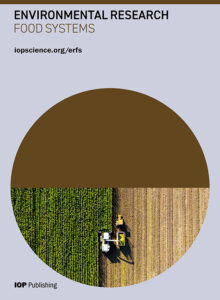ERFS研究文章|Impacts of sand and dust storms on food production

文章介绍
Nick Middleton
作者:
- Nick Middleton,英国牛津大学
期刊介绍

- Environmental Research: Food Systems是一本多学科、开放获取的期刊,致力于解决可持续食品系统的科学问题,并在影响/未来风险、复原力、环境减缓、环境适应、环境安全和最广泛意义上的解决方案方面进行努力。

Nick Middleton
作者:
